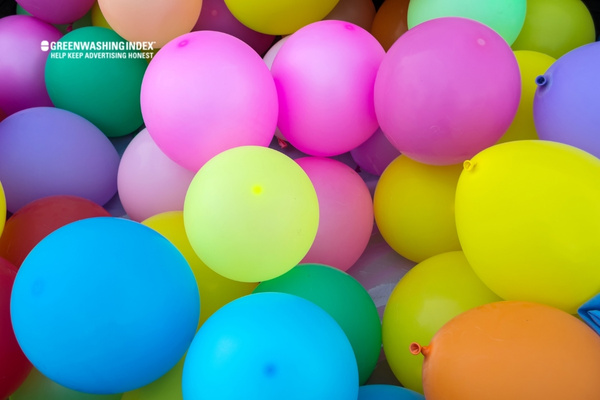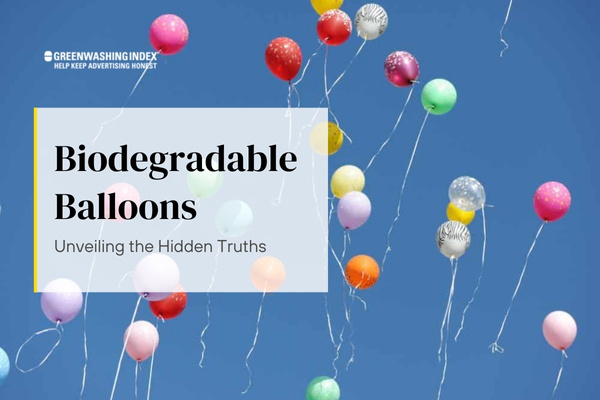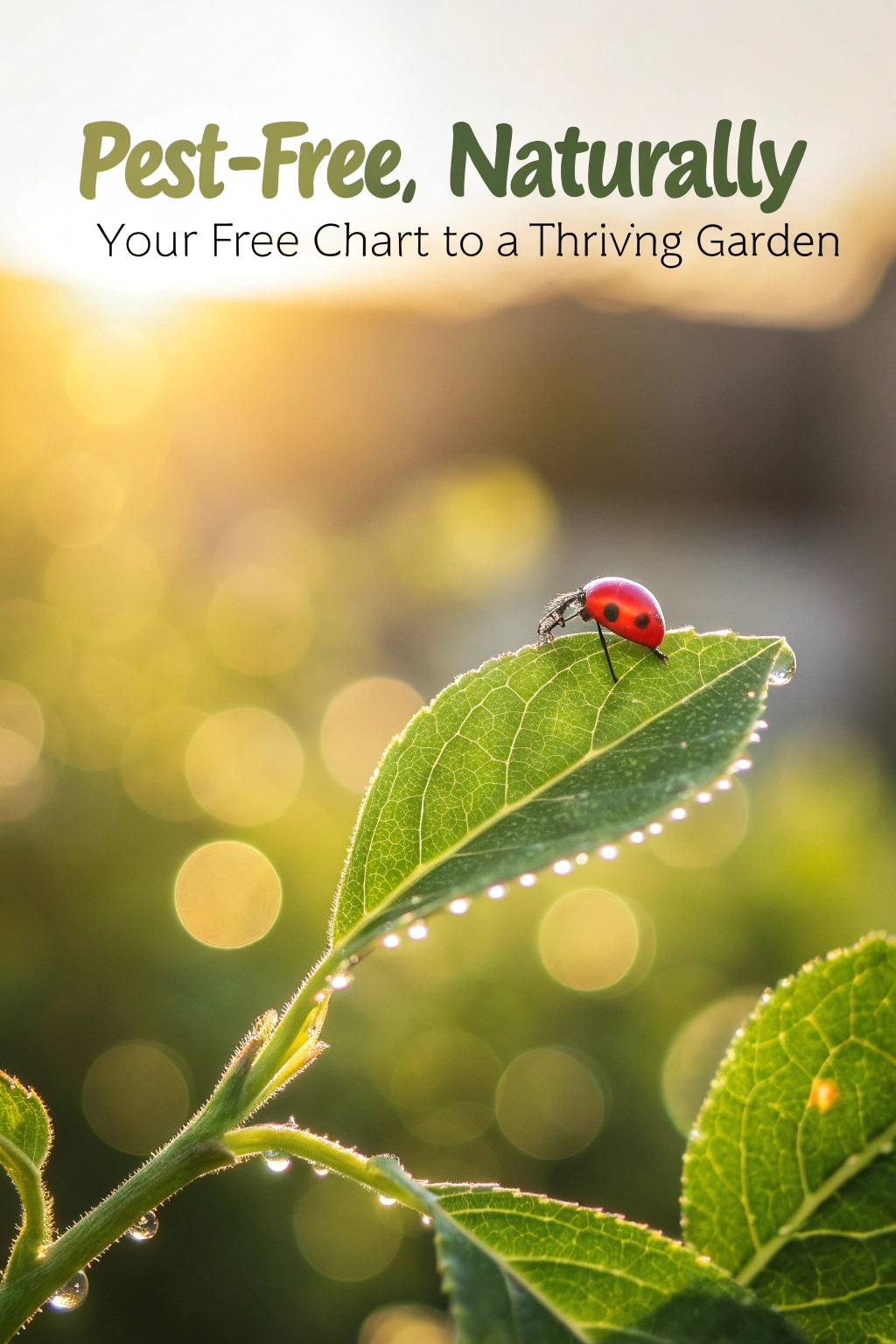Balloons are a staple of celebrations, adding a vibrant touch to any event. However, the increasing popularity of biodegradable balloons raises an important question: are balloons biodegradable? While they promise to be a greener alternative to traditional options, their environmental impact is often misunderstood.
These festive decorations might seem harmless, but the reality behind their biodegradability can be surprising. Are they truly the eco-friendly choice we hope for, or do they come with hidden consequences? Let’s explore the truth about biodegradable balloons and their role in our celebrations.
Exploring What they’re Made of?
When it comes to celebrating, balloons are often on our go-to list for party decorations. The vibrant colors, the way they dance in the air – they’re festive essentials. In recent times, folks have started turning to biodegradable balloons as a more earth-friendly option. But what’s the real deal with these so-called greener choices? Let’s pull back the curtain and take a closer look.
Alright, let’s break it down; not all balloons are created equal. The ones you grew up with are mostly made of latex or Mylar. However, biodegradable balloons – these guys are a different breed:
- Material: Traditional latex balloons come from rubber tree sap but include additives like plasticizers and artificial dyes that don’t play nicely with Mother Nature. On the flip side, biodegradable balloons take this natural latex base and eliminate most synthetic components.
- Comparison: Think of it like whole grain versus white bread; one keeps it close to nature while the other wanders off track.
- Eco-Friendly Pigments: For those pops of color we love so much? Biodegradable options use organic pigments when possible.
The Process of Biodegrading
If “biodegrading” sounds like science fiction to you, let me simplify it: It’s nature’s clean-up crew at work. Here’s how I’d lay out the process:
- Exposure: Once exposed to elements like sunlight and moisture in compost-like conditions…
- Microorganisms Step In Little critters that are too small for us to see – bacteria and fungi – chow down on the material.
- Breakdown: They turn those once sky-high floating wonders into water, carbon dioxide (CO2), maybe some methane (CH4), and biomass.
- Timeframe Matters: Think ‘The Tortoise and the Hare’—slow but steady wins this race; biodegradable doesn’t mean instant disappearance.
Remember though:
- Conditions have got to be just right—a backyard compost might not cut it compared to industrial facilities.
- Temperatures need that sweet spot: not too cold, not too hot—the Goldilocks zone for decomposing if you will.
So yeah, while understanding what goes into biodegradable balloons—and breaking down those chunky biological terms—is crucial before switching gears entirely from regular latex or foil options, there’s a lot under the hood here worth considering before stamping them as Mother Earth’s balloon-of-choice.
Biodegradables mark a step toward eco-friendly celebrations—but folks might want to keep their feet on the ground regarding their actual environmental footprint until every angle is assessed thoroughly.
Keep in mind:
- Going green is more a marathon than a sprint—it takes attention and patience!
- Every small change matters—knowledge is power when making sustainable party supply choices.
The Alarming truth about Biodegradable Balloons
When it comes to celebrating big moments, balloons are often a go-to decoration to amp up the festive vibe. Lately, there’s been a buzz around biodegradable balloons as an environmentally friendlier choice—but do they really live up to the hype? Let’s get into the nitty-gritty of what ‘biodegradable’ means in this context and whether these balloons are truly greener than we think.

Decoding ‘Biodegradable’
The term ‘biodegradable’ sounds straightforward—something that can break down naturally over time, right? But here’s where things get murky:
- Definition: Biodegradability refers to the ability of materials to decompose by biological processes. However, just because something is labeled biodegradable doesn’t mean it does so quickly or without any environmental impact.
- Standards Vary: There isn’t a universal standard! This means what qualifies as biodegradable varies between industries and even countries—leading to widespread confusion.
- Decomposition Environment Matters: Most items, including biodegradable balloons, require specific conditions—like humidity, light exposure, and certain microbes—to break down efficiently.
Sorting out these details is crucial because misunderstanding them could lead us to make choices that aren’t as eco-friendly as we believe.
Greener than you may Think
You might’ve seen them touted at parties or events—biodegradable balloons that claim they can vanish without a trace after they’ve served their purpose. But let’s unpack what that really means:
- Decomposition Time: Firstly, let’s talk about how long it actually takes for these biodegradable balloons to decompose. Companies often claim that they can break down ‘as quickly as an oak leaf.’ It sounds neat until you realize that an oak leaf can take anywhere between six months to two years or even more under certain conditions. Compare this with how rapidly plastic accumulates, and those biodegradation times don’t look so quick anymore.
- Residue Left Behind: Then we move on to residues left behind during decomposition. To mimic the elasticity of synthetic latex in natural latex-based balloons (the most common type of biodegradable balloon), manufacturers often add certain chemical fillers and pigments that might not break down as easily or cleanly.
- Environmental Conditions: And here’s something else interesting: biodegradation depends heavily on environmental conditions like temperature and moisture levels, among others – stuff which varies considerably across different environments where these float off into or are disposed of.
So, while I thought I was doing the environment a favor by choosing biodegradable balloons instead of synthetic ones, diving into these alarming facts helped me realize that maybe they aren’t all they’re touted to be after all.
Impact of Biodegradable Balloons on Environment
Escaping the joyous clutches of parties and celebrations, balloons often find themselves on a less celebratory journey — one that leads them into the arms of Mother Nature. While many have turned to biodegradable balloons as a purportedly environmentally friendly alternative, their impact might be more significant than we initially believed.
Littering Earth and Sea
Despite being labeled ‘biodegradable,’ these materials linger long enough in both settings to cause extensive damage before breaking down completely.
- Terrestrial Effects: Once airborne, these buoyant symbols of festivity eventually deflate and descend, scattering across parks, forests, and backyards. The remnants may seem inconsequential due to their size, but over time they accumulate. Here’s what happens:
- Disruption in Soil Composition: As they break down, biodegradable balloons can alter the natural soil structure.
- Absorption Rates: Some materials used may take longer to break down depending on environmental conditions such as moisture and sunlight.
- Marine Pollution: Our oceans bear silent testimony to the party aftermath with deflated balloons washing ashore or floating beneath the waves. Consider this:
- Ingestion by Marine Life: Balloons are often mistaken for food by sea creatures. Once ingested, they can obstruct digestive tracts, leading to starvation or injury.
- Coral Reefs Encounter: Entangled balloon strings can smother coral reefs that are critical to marine biodiversity.
Hazard for Wildlife
Biodegradable balloons may sound harmless, but unfortunately, they can pose severe threats to numerous creatures. During their extended decomposition period, these materials often find their way into the natural habitats of various animals and unsuspecting wildlife end up mistaking balloon remnants for food.
- Birds: Birds are particularly at risk from balloon debris since they often mistake inflated or burst balloons for prey while in flight. Ingesting balloon fragments can lead to digestive blockages that are usually fatal.
- Marine Life: Similarly, marine animals such as turtles and dolphins mistake floating balloons for jellyfish—one of their primary food sources—and consume them. Again, internal blockages lead to starvation and eventually death.
- Livestock: Interestingly enough it’s not just wild creatures that endure suffering due to misplaced balloon pollution—farmland animals do too! Deflated balloon scraps found in fields are likely mistaken for edible material by grazing livestock leading once more to serious health complications.
While biodegradable balloons appear to be a promising solution to minimize environmental hazards caused by traditional non-biodegradable variants, they might not be as green as they seem.
We all need to understand that ‘biodegradable’ is not synonymous with ‘harmless’; it merely means a slightly better alternative when strictly considering waste management perspectives—but by no means delivers an all-clear signal where ecological impacts are concerned.
Debunking myths around Biodegradable Balloons
Biodegradable balloons are often marketed as a more environmentally friendly alternative to traditional balloons, promising to decompose quickly and harmlessly. However, the reality is more complex.

Despite their claims, biodegradable balloons can take months or even years to break down, depending on environmental conditions. Additionally, while the latex may be natural, the manufacturing process introduces various chemicals that hinder true biodegradability. This has led to significant concerns regarding their impact on wildlife and ecosystems.
Below is a comparison of common myths about biodegradable balloons and the corresponding facts.
| Myth | Fact |
|---|---|
| Biodegradable balloons break down quickly. | They can take several months to years to decompose, much longer than commonly believed. |
| They cause no harm when they degrade. | Harmful residues can remain in soil and water, affecting microorganisms and plant life. |
| All parts are safe for wildlife. | Non-biodegradable components like plastic valves or ribbons can entangle or be ingested by animals. |
Are there truly Eco-Friendly Alternatives?
Is there such a thing as a 100% green balloon, or is it more of an oxymoron? Unfortunately, even biodegradable balloons fail to live up to this lofty eco-ideal. But don’t feel deflated just yet; not all hope is lost.
- Paper Balloons: This option is much friendlier to Mother Earth as they decompose quicker and cleaner in comparison. Plus, most paper used for these balloons can be sourced sustainably.
- Cloth Balloons: Made from fabric scraps or old clothing items, cloth balloons can be reused over and over again, perfect for multiple eco-friendly celebrations without the added guilt of contributing to balloon pollution.
While no balloon could be truly ‘green’ if released into the environment given the undeniable risk they pose even when made biodegradable or from natural materials (due to potential wildlife harm and considerable decomposition time), these alternatives allow for a degree of environmental responsibility while appeasing our desire for decorative festivity.
To prevent adding share in harming the earth with rogue balloons—it’s best either not to release any balloon outdoors regardless of its eco-claims or opt for other decorative options that don’t pose such risks if disposed of responsibly after use.
Making more Eco-Conscious Choices
Our everyday decisions have a tremendous impact on the environment. Choosing more eco-friendly alternatives not only reduces our carbon footprint but also helps protect the planet for future generations. Two key ways we can be more environmentally responsible in celebrations and events are by picking sustainable decorations and encouraging better use and disposal of balloons.
Choosing Sustainable Decorations
Decorating for a special event is part of the fun, but it’s essential to consider what happens to these decorations after the party ends. By choosing sustainable decorations, we can still enjoy lovely environments without adding to pollution.
- Use Natural Elements: Nature provides us with an abundance of biodegradable materials like flowers, leaves, pine cones, branches, and other botanical elements that can enhance any event with their unique beauty.
- Opt For Soy or Beeswax Candles: Instead of petroleum-based candles that release harmful chemicals when burned, opt for cleaner-burning options like soy or beeswax candles.
- String Lights: LED string lights are energy-efficient and reusable — perfect for adding a magical touch to your celebrations without the environmental cost.
- Reusable Banners & Decorations: Choose decorations you can use again at future parties; they’ll reduce waste and save money over time!
Making slight modifications in our choices could contribute significantly to reducing environmental harm while maintaining a celebration spirit!
Encouraging Responsible Use and Disposal of Balloons
Balloons bring joy at many gatherings; however, they can wreak havoc on ecosystems if not used responsibly. Whether biodegradable balloons or traditional ones are utilized, every effort should be made to control their destination after being released into the air.
Here are some tips for responsible balloon use:
- Avoid Balloon Releases: While releasing balloons into the sky may look beautiful at weddings or memorial services these behave as litter when they finally descend back on land or sea.
- Proper Disposal: After balloons serve their purpose, make sure to pop them and dispose of them in a garbage bag. This reduces the chances that they’ll become litter or threats to wildlife.
- Use Balloons Indoors: Using balloons indoors significantly decreases the likelihood of them ending up as environmental pollutants.
- Go for Alternatives: Consider using alternatives such as bubbles, eco-friendly confetti, or even kite flying. These can offer a fun and festive atmosphere without causing harm to our environment.
Remember, our choices matter. By making eco-conscious decisions, we can create joyous celebrations that also show respect for our planet!
FAQs
How long do biodegradable balloons really take to decompose?
While manufacturers often claim that biodegradable balloons decompose as fast as an oak leaf, the truth is it can take anywhere from six months to four years for these items to fully break down.
What makes these balloons not as eco-friendly as they claim to be?
Though billed as a green choice, biodegradable balloons can still have a negative environmental impact. They often leave behind residue harmful to ecosystems and wildlife when degrading. And, the decomposition process itself can take up an alarming amount of time.
What eco-friendly alternatives can we use instead of balloons for decorations?
There are many sustainable party supplies available today. From reusable decor like banners or ribbons, LED lights for a glowing ambiance, or even naturally beautiful flowers or potted plants – there are plenty of ways you can celebrate responsibly without compromising on fun!
Conclusion
Biodegradable balloons present a seemingly eco-friendly alternative to traditional balloons, yet their environmental impact is more complex than it appears. While they are designed to break down over time, the reality is that they can still pose significant risks to wildlife and ecosystems due to their prolonged decomposition and harmful residues.
As we celebrate life’s moments, it’s crucial to weigh the true cost of our choices. Will biodegradable balloons truly lighten our environmental footprint, or do we need to explore more sustainable options? The journey towards greener celebrations continues, and every informed decision counts.




